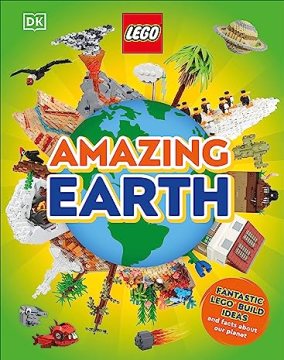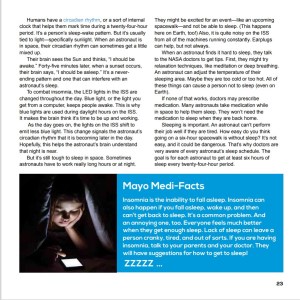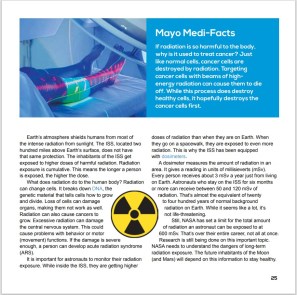
This is an active month for sky-watchers. Not only will the “Great North American Eclipse” happen on April 8, but the night sky will feature a comet that you should be able to view without a telescope.

Eclipse Chaser: Science in the Moon’s Shadow (Scientist in the Field) by Ilima Loomis, photos by Amanda Cowan
This is a story about the last “Great North American Eclipse” – August 2017 – and how a science team studies eclipses. Not only do they have to find the best place for observing the event, they have a lot of instruments to set up and test prior to the day. Plus, a bagel production line on the morning of the Big Day.

Casting Shadows: Solar and Lunar Eclipses with The Planetary Society by Bruce Betts
This book uses straightforward language aimed at younger middle grade readers. Beginning with shadows, it then shows how eclipses happen and how you can observe them. One chapter focuses on lunar eclipses and one on solar eclipses.

The Science Behind the Wonders of the Sun: Sun dogs, Lunar Eclipses, and Green Flash by Suzanne Garbe
This is also a lower middle grade text discussing the cause and cycle of sunspots, solar and lunar eclipses, solar winds, flares, and ejections, As well as the reason for, and places to find, the green (and rarer blue) flash. Photo illustrated, it also includes fascinating “fact sidebars,” a link to activities, and critical thinking questions.

Astronomy for Curious Kids: An Illustrated Introduction to the Solar System, Our Galaxy, Space Travel – and More! by Giles Sparrow
This browsable book is divided into six chapters, each highlighting some aspect of astronomy. The first two introduce the study of astronomy and tools astronomers use. Others focus on the solar system, stars, and galaxies. There’s a great spread on eclipses and another showcasing comets, plus a section about life in the universe.

Can’t Get Enough Space Stuff: Fun Facts, Awesome Info, Cool Games, Silly Jokes, and More! by Julie Beer and Stephanie Warren Drimmer (National Geographic)
Another browsable astronomy book with engaging photos, a matching game glossary, space puns and riddles, space guessing games, a plethora of amazing facts, “Rad Records” on planets and astronauts, and lots of activities to try.

Sky Gazing: A Guide to the Moon, Sun, Planets, Stars, Eclipses, Constellations by Meg Thacher
A browsable book, divided into sections that focus on the sky, the moon, the sun, planets, and stars and constellations. Each section includes activities, including how to make a pinhole eclipse-viewer and there is a list of upcoming solar and lunar eclipses through 2030.

Stargazing for Kids: An Introduction to Astronomy by Jonathan Poppele
This handy hand-held guide is a wonderful color introduction to astronomy and the observation and mapping of the night sky. Conversational “What can I see?’ and “How do we know?” sections offer ways to spot the planets, stars, galaxies, and satellites. In addition to mini biographies of scientists and scholars, it offers a detailed sky map and guide for each season.

Asteroid vs Comet by Dr. Marc Kuchner, illustrated by Matt Schu
This book is aimed at younger MG readers, written as a fight match with sections that compare and contrast various properties of asteroids and comets. Who’s heavier? Who’s the fastest? And who will come out the winner? End pages feature named asteroids and comets and back mater gets into more details about comets and asteroids.

Out Of This World: Star-Studded Haiku by Sally M. Walker; illustrated by Matthew Trueman
Yes, there IS a haiku about a solar eclipse (with tiny nibbles / the moon gobbles down the sun …) There are also tiny poems about Saturn’s rings, nebulae, and shooting stars. Plus, wonderful back matter. This book will inspire readers to create their own eclipse (or comet) haiku.

The Day the Universe Exploded my Head: Poems to Take You Into Space and Back Again by Allan Wolf, illustrated by Anna Raff
From a “Solar Sunnet” (sonnet) to a “Poem for Three Meteors,” and a black hole shape poem to “The Children of Astronomy” (with their profiles outlined by stars), whimsical illustrations make learning poetry forms and space facts fun. Includes fun side by side solar and lunar eclipse poems, as well as “Notes on the Poems” with additional scientific facts and information on the various poems.

When the Sun Goes Dark by Andrew Fraknoi, illustrated by Eric Freeberg
This story, published by the National Science Teacher’s Association, uses fiction to introduce young people to the science behind eclipses. It includes some hands-on activities for re-creating eclipses in your living room using a lamp, a tennis ball, and a couple hula hoops.
This month’s STEM Tuesday book list was prepared by:

Sue Heavenrich, who writes about science for children and their families on topics ranging from space to backyard ecology. Bees, flies, squirrel behavior—things she observes in her neighborhood and around her home—inspire her writing. Visit her at www.sueheavenrich.com.

Maria Marshall, a children’s author, blogger, and poet who is passionate about making nature and reading fun for children. When not writing, critiquing, or reading, she watches birds, travels the world, bakes, and hikes. Visit her at www.mariacmarshall.com.

 We’re excited to have Jennifer Swanson on here today to talk about her two new releases. Let’s start with learning a bit more about her, and then we’ll talk more about both of her books, Spacecare: The Kids Guide to Surviving Space and LEGO: Amazing Earth.
We’re excited to have Jennifer Swanson on here today to talk about her two new releases. Let’s start with learning a bit more about her, and then we’ll talk more about both of her books, Spacecare: The Kids Guide to Surviving Space and LEGO: Amazing Earth.








 I am so excited to share the newest cover reveal for an awesome new space book by our own Mixed-Up Files Jennifer Swanson’s SPACE CARE: A Kid’s Guide to Surviving Space
I am so excited to share the newest cover reveal for an awesome new space book by our own Mixed-Up Files Jennifer Swanson’s SPACE CARE: A Kid’s Guide to Surviving Space